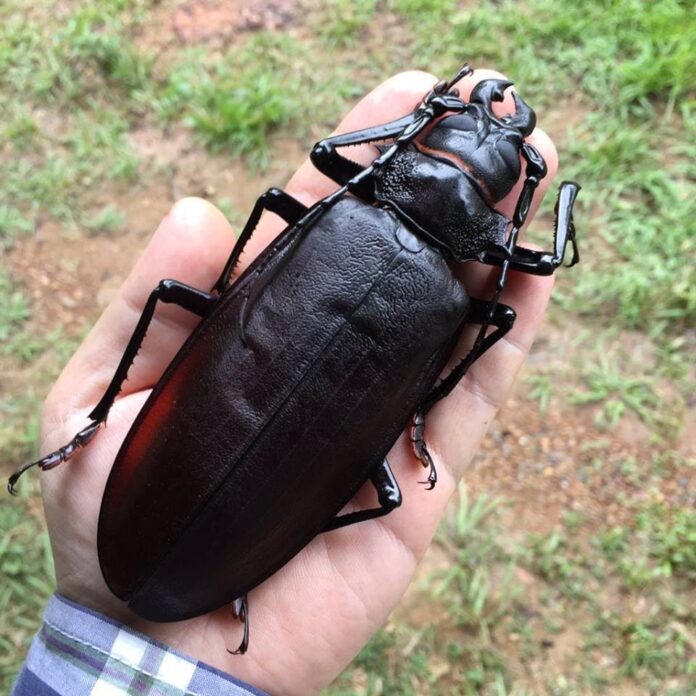If you think that insects are small, think again because this list of the largest insects will tell you why. When it comes to insects, it is common to think about ants, bees, and other similar types. However, things are more than that and we are going to explore some larger ones today. You should definitely check out the 10 largest insects below, do let me know which one you like the most.
1Atlas Moth
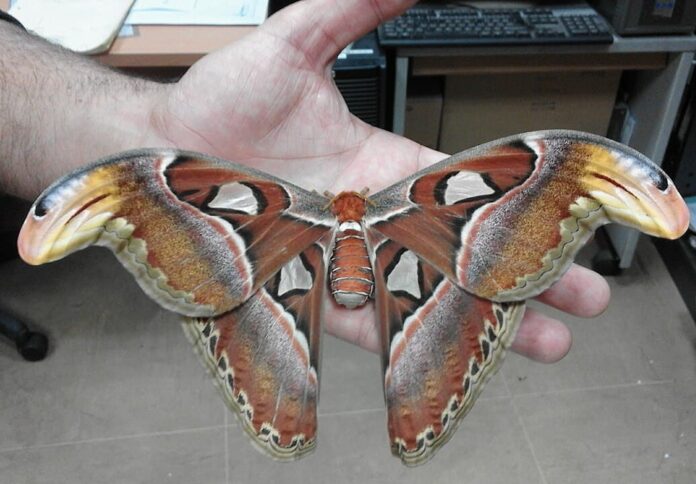
Scientific Name: Attacus Atlas
How big do you think a moth can get? Take a look at the atlas moth, the insect with a wingspan of up to 24 centimeters. The upper side of the wings is reddish-brown with black, pink, purple, and white patterns. And the cool part is the triangular and scale-less windows with black borders on each of their four wings. On top of that, the tips of both forewings have prominent extensions that resemble a snake’s head to keep predators away. Those wings are literally just for show because the moths have an unsteady and weak fly. The body of the moth is pretty small, and adult atlas moths don’t have mouthparts. Their sole purpose is to find a mate and their lifespan as an adult is only a few days.
Atlas moths inhabit dry tropical forests, secondary forests, and shrublands across East Asia, South Asia, and Southeast Asia. With enough food supply, an atlas moth can spend its entire life cycle on just one single tree. It will probably move to nearby trees if there is a potential mate there. In their range, people collect them and harvest the silk similar to silk produced by silkworms that the caterpillars produce. That is not all, their abandoned cocoons will be turned into purses due to the durability of the material. Atlas moths are also popular in the pet trade because they are easy to care for and they are docile. The only negative thing about these large insects is their voracious appetite which turns them into pests of quinine and tea in some regions.
2Chinese Praying Mantis
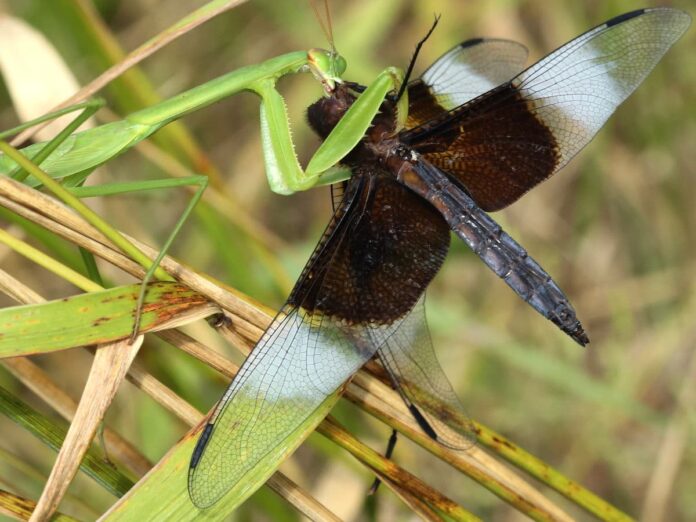
Scientific Name: Tenodera Sinensis
Praying mantises with a regular size are already quite sassy, let alone the ones that are this big. The Chinese praying mantis is a long and slender praying mantis that can reach over 11 centimeters long. It has a brown to green body with green lateral strips on the borders of the front wings. Just like most praying mantises out there, this one also has a triangular head that swivels for easy prey tracking without having to move. With a lifespan of just around a year, a Chinese mantis hatches in the spring, eats, grows, and molts through the summer. It will mate and lay eggs at the end of the summer and then die when the weather gets too cold. Then the cycle repeats.
This praying mantis species is native to Asia and nearby islands where they feed on insects and small vertebrates. The menu consists of many things such as amphibians, grasshoppers, hornets, katydids, small reptiles, and spiders. Some adult females are even fast enough to catch hummingbirds to eat. And for the females, the special menu is her partner whom she kills and eats after mating. Their everyday activities include them perching in tall plants or other areas with a view. When a potential prey crawls or flies past, they will quickly snatch it to eat. In some areas, they are considered pests due to the large population that feeds on pollinators such as bees and hummingbirds. Many people also have them as pets because they are easy to care for, and that size is one of the main reasons.
3Driver Ant
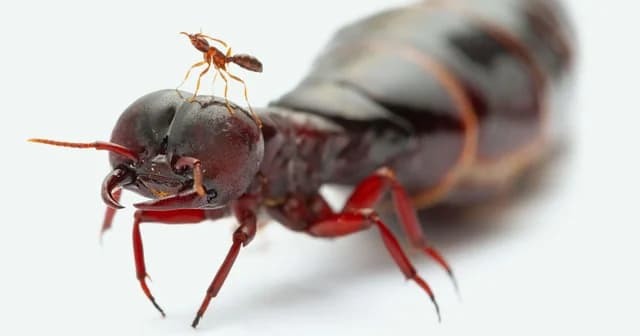
Scientific Name: Dorylus
Things are a bit controversial when it comes to the largest insects in the ant kingdom. However, we have come to the conclusion that driver ants are the largest because their queens are the largest ants on Earth. A queen driver ant can be as large as 4 to 6.3 centimeters which is enormous for an ant. She is the only individual that can reproduce as female soldiers and workers are sterile. The queen mates with 10 to 20 drones on the ground, and then she goes off to establish new colonies.
Soldier driver ants have large heads with scissors-like mandibles along with the ability to sting. A bite from a soldier driver ant is severely painful, and it leaves two puncture wounds when removed. Mind you, the removal process is not a trip through the part because the grip from the jaws is very strong. Various East African Indigenous tribes use these ants as stitches. If they suffer from a laceration in the wild, they will get the ant to bite both sides of the gash. Then they break off the ant’s body, leaving just the jaws that securely staple the wound for days.
So Dolyrus is a large genus of army ants that are native to Central and East Africa. The colonies of these ants are huge, with more than 20 million individuals whose diet consists of earthworms. One of the unique things about them is that they are quite mobile. When food supplies become short, the colony will leave its current habitat and form marching columns to a different location. Because they eat as they move, they actually provide benefits to some communities along the way, like the Maasai. The ants consume crop pests from insects to large rats, doing the communities a big favor.
4Giant Burrowing Cockroach
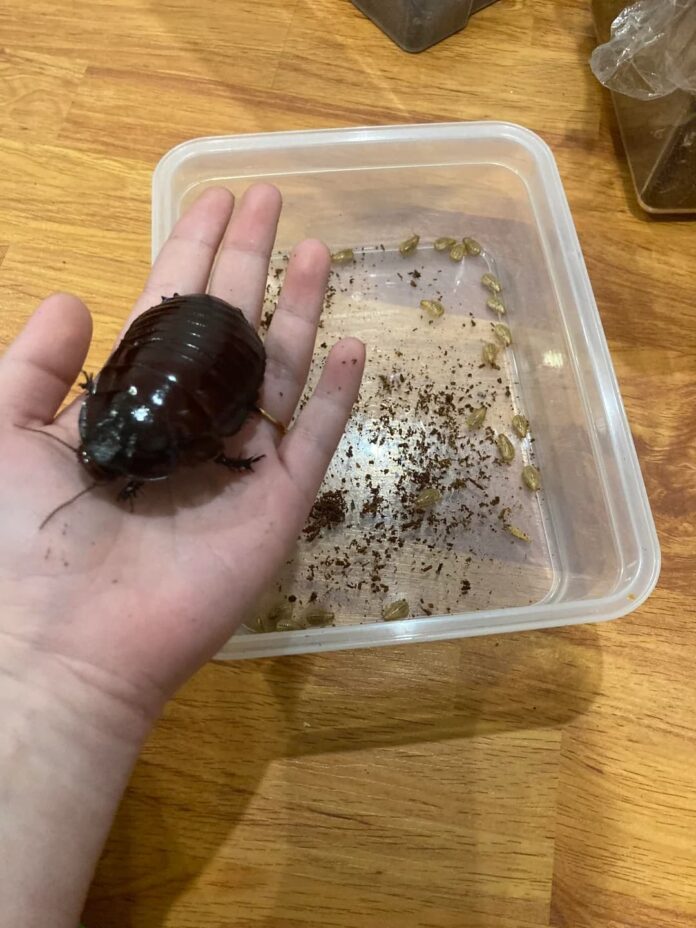
Scientific Name: Macropanesthia Rhinoceros
Giant burrowing cockroach aka the rhinoceros cockroach is the largest cockroach in the world. It is also the heaviest cockroach species in the world, weighing between 30 and 35 grams which is around 20 almonds. A giant burrowing cockroach can reach up to 8 centimeters in length, and they don’t have wings like the typical cockroach. The body is commonly flattened and oval in shape, and it is dark reddish-brown in color. But don’t let their cousins make you judge them, they are not pests and they do not invade homes. In fact, they are very important to the ecosystem because they feed on dead leaves which recycle nutrients in the wild.
If you see something freaky and wonder where it is from, always guess Australia because you may be right. The giant burrowing cockroach is native to Australia, mostly in tropical and subtropical parts of Queensland including rainforests, savannas, and woodlands. These cockroaches burrow down in soil at a depth of around 1 meter which is where they call home. They live there and they store their food there, pretty neat. This unique behavior makes them the only cockroach in the world that have permanent burrows in the soil. And their unique characteristics make them quite a popular pet in Brisbane.
5Giant Chinese Stick Insect
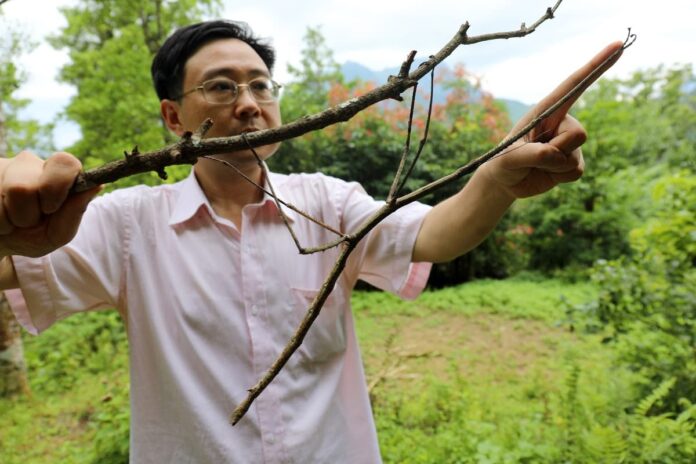
Scientific Name: Phryganistria Chinensis Zhao
Stick insects are generally large but this is the largest among the large stick insects out there; the longest to be exact. As the longest insect in the world, this species is 64 centimeters including its extended legs. The body alone is already 38.2 centimeters long which is the largest specimen known to men, according to the Guinness World Records. Found in China in 2014, the Chinese name for it in English is the giant Chinese stick insect. Scientists discovered that these stick insects have a sweet tooth and they are fond of strawberry jam when offered. The genus Phryganistria is native to Northeastern South Asia, Northern Mainland Southeast Asia, and Southern China.
6Giant Grasshopper
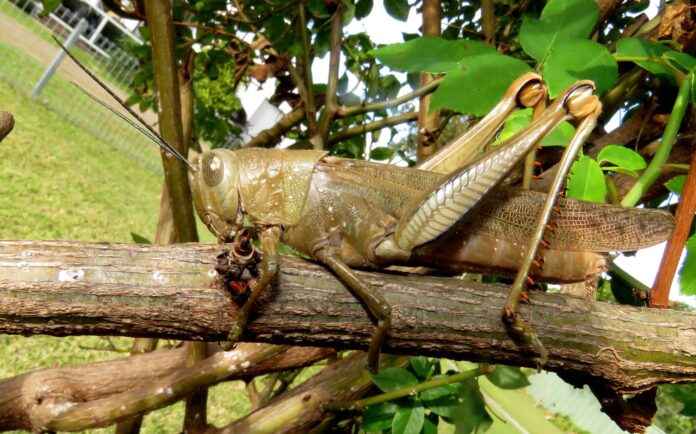
Scientific Name: Valanga Irregularis
Introducing the largest grasshopper in Australia and Southern African countries that can reach a length of 7.5 centimeters. Individuals that are up to 10 centimeters long are not uncommon. An adult giant grasshopper is creamy brown to grayish-green in color, and its forewings have a black dot pattern. As you can see, their hind legs are adorned with orange and red spines with black stings. This gives people a reason to be careful when catching them because those little spurs can inflict pain.
Distribution? Anything mutant and weird comes from Australia, and this one is native to the subtropical and tropical regions of Sydney. Giant grasshoppers are fond of moist climates so they usually hang out in forests and grasslands in spring and autumn. And if the weather is good, it is common to see them in suburban gardens sometimes. These large grasshoppers are solitary but a large number of them in one spot can cause damage to plants. They feed mainly on foliage and occasionally very young coffee berries which make them pests in some places.
7Giant Long-Legged Katydid
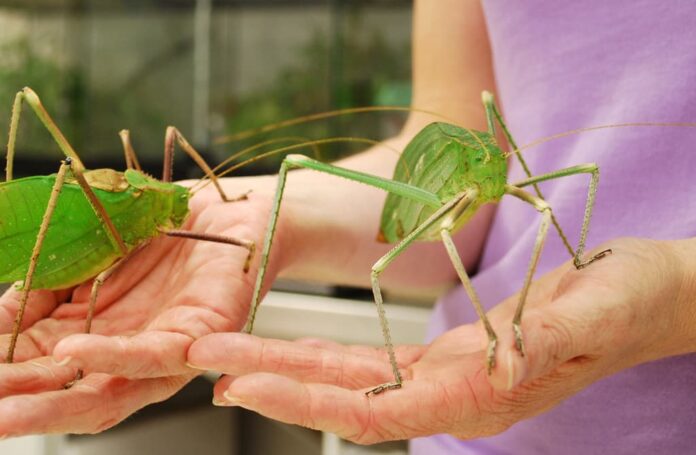
Scientific Name: Arachnacris Corporalis
Native to Malaysia, these leafy bugs are one of the largest insects in the world you should see. Being the largest katydid species in the world, a giant long-legged katydid can grow up to 15 centimeters long. With a body that looks exactly like a leaf, they have long thin legs that look like little twigs. The best part is that there are even brown tips on the wings that resemble rotting leaves which is super impressive. Also, the more brown on the wings also means the older the katydids are. This appearance is to ensure a perfect camouflage in trees to keep them invisible to predators.
8Little Barrier Giant Wētā
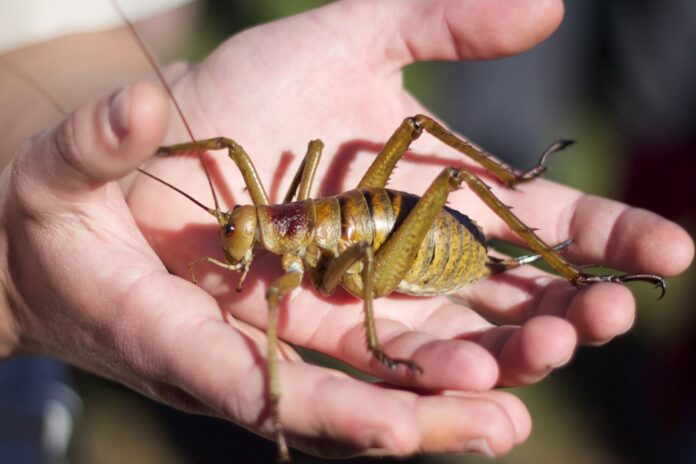
Scientific Name: Deinacrida Heteracantha
The list of the largest insects is incomplete without the giant wētā, and there are 11 species in the giant wētā family. Every single one of the members is large, and little barrier giant wētā aka giant wētāpunga is the largest. A little barrier giant wētā can grow up to 20 centimeters, the size of a hamster. It is usually black, brown, and reddish-brown in color, and it has a very stocky body. Because they are so large, the giant wētāpunga can neither fly nor jump like normal crickets out there. A cricket of that size is pretty intimidating but they are docile and harmless, and they even allow handling. I mean, they can’t even jump so they will let people handle them which makes them a popular pet too.
You probably wonder why the name of this bug is so unique, it is endemic to New Zealand and that is the local name. They live in burrows on the forest floors where they feed on flowers, fruit, lichens, leaves, and seeds. The cute thing is that they love carrots and the way they hold the carrot with their front legs while being fed is just adorable. Many giant wētā species are suffering from many threats including habitat destruction, habitat modification, and introduction of mammalian predators. Despite being tough enough to resist cold temperatures, they cannot handle the predation of invasive mammal species like cats and rats. New Zealand is protecting several species from going extinct with breeding and conservation programs which is a good thing.
9Mydas Fly
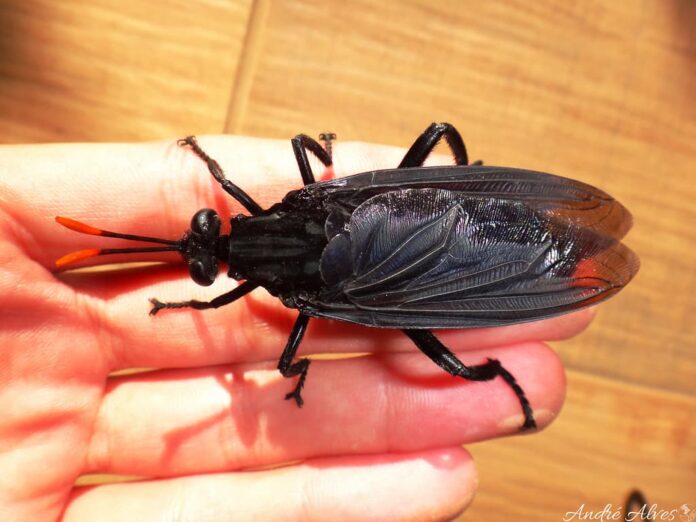
Scientific Name: Gauromydas Heros
Never in my wildest dreams would I have ever thought a fly could be this massive. It is not only one of the largest insects in the world but also the largest fly species. On average, its body is at a length of 7 centimeters with a 10 centimeters wingspan. The body is a bit plump and the wing membrane is whitish brown or whitish orange. And while being absolutely harmless, their appearance resembles a wasp which usually keeps not only predators but also entomologists away.
Mydas flies have a wide distribution across the Neotropical region including Argentina, Brazil, and Costa Rica. Adult males feed on flower nectar and adult females don’t eat while larvae feed on immature insects. Females usually lay their eggs in leafcutter ant nests and the hatchlings feed on the ant larvae. These flies are rare because of their elusive nature and short lifespan so their information is still limited.
10Titan Beetle
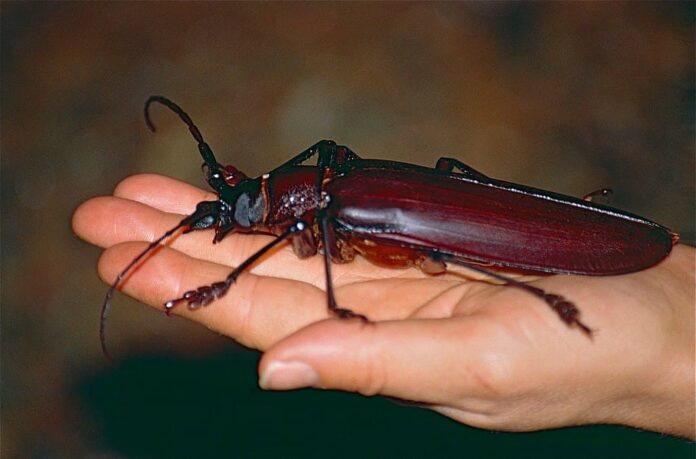
Scientific Name: Titanus Giganteus
Here you are looking at one of the largest beetles in the world, and one of the largest insects. A titan beetle can grow up to 17 centimeters long, including that freaky antenna aka horns that take half of the length. If you look closely, you can see that it has large eyes that up around a third of the head. These large eyes provide a wide field of you with great vision to see around its surroundings. It has a reddish-brown body, and somehow useless wings that cannot take off from the ground because it is too heavy. To be able to fly, a titan beetle will have to climb trees and launch itself into the air. Only males can fly though, females do have wings but they cannot fly.
When threatened, a titan beetle will hiss (some say screech) but they are not aggressive. Titan beetles have powerful jaws and sharp spines that are very helpful when it comes to protecting themselves from predators. However, do watch out for those jaws because they are strong enough to break a pencil, dent a plastic ruler, and snap twigs. Just have a little imagination of what these scissors of mandibles can do to our human flesh.
Titan beetles are native to tropical rainforests throughout South America, with a dense population in the Amazon Rainforest. They live in old-growth forests with plenty of rotting wood which is their principal food supply. Titan larvae feed on decaying wood below the ground and adults don’t really eat due to the short lifespan of just a few weeks. And if the conditions are favorable, these titans also live in disturbed habitats and secondary forests as well. Titan beetles are now facing threats due to climate change, deforestation, and habitat loss.
Related Post: Largest Spiders In The World

